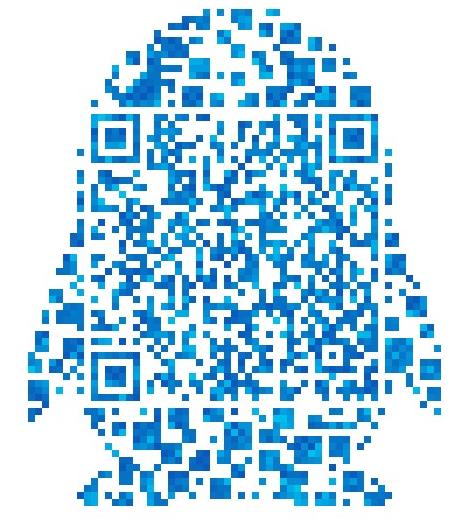基于深度学习的cssci学术类别判定模型构建研究【字数:12359】
目录
摘要 III
关键词 III
Abstract IV
引言
引言 1
一、相关研究 1
(一)基于人工标引的统计方法 1
(二)基于机器学习的文本分类技术 1
二、深度学习模型简介 2
(一)循环神经网络模型 2
(二)长短时记忆网络 3
(三)层级注意力机制 4
(四)TextCNN模型 5
(五)TextRCNN模型 6
(六)BERT模型 6
(七)ALBERT模型 8
(八)RoBERTa模型 8
三、实验 9
(一)语料简介及处理 9
(二)实验流程 10
(三)方法 10
(四)实验设置 10
四、实验结果及分析 11
(一)论文类别判定评价指标 11
(二)论文类别判定实验效果及分析 12
1.以论文题名为特征的论文类别判定模型构建 12
2.以论文题名、关键词为特征的论文类别判定模型构建 16
五、结语 20
致谢 20
参考文献 20
图 21 基于循环神经网络的CSSCI论文类别判定模型 2
图 22 基于双向长短时记忆网络的CSSCI论文类别判定模型 4
图 23 基于GRU的词级别注意力机制 4
图 24 基于TextCNN的CSSCI论文类别判定模型 5
图 25 基于BERT的CSSCI论文类别判定模型 7
图 26 基于BERT的CSSCI论文标题输入表示 8
图 31 CSSCI论文类别判定实验流程 10
图 41 深度学习模型效果对比 13
图 42 基于TextCNN的论文类别判定结果 14
图 43 迁移学习模型效果对比 15
图 44 基于BERTwwm的论文类别判定混淆矩阵 15
图 45 不同特征组合基于MicroF1的效果对比 *51今日免费论文网|www.51jrft.com +Q: #351916072#
17
图 46 不同特征组合基于TextRCNN模型的效果对比 17
图 47 不同特征组合基于BERT模型的效果对比 18
图 48 基于BERT模型的论文类别判定评估结果 19
表 31 CSSCI收录论文学科数量分布 9
表 32 模型超参数设置 10
表 33 模型训练超参数 11
表 41 以论文题名为特征的论文类别判定模型评测结果 12
表 42 以论文题名、关键词为特征的论文类别判定模型评测结果 16
表 43 基于BERT模型的论文类别判定效果 18
基于深度学习的CSSCI学术论文类别判定模型构建研究
摘 要
随着科学技术的快速发展,期刊论文作为科研成果的主要载体,其数量也呈迅速增长之势,如何对这些学术论文进行高效合理的分类已成为亟待解决的问题。传统的手工分类已经无法满足大数据环境下的需求,将自动分类方法应用于期刊论文分类,可以有效地解决这一问题。近年来深度学习领域的兴起,使自动分类问题得到了迅速的发展。本文将深度学习的概念引入期刊论文的自动分类领域,选取中文社会科学引文索引CSSCI收录的期刊论文数据为实验样本,以论文题名和关键词组合作为分类特征,分别使用RNN、LSTM等深度学习模型和BERT等迁移学习模型展开实验,并对实验结果进行宏平均和微平均两个方面的评估。分类结果表明,在所有特征组合下所有模型的宏平均与微平均F1均超过75%,以题名为特征的BERTwwm模型的微平均F1达到80.08%,补充论文的关键词特征后,BERT模型的微平均F1为82.39%,在教育学、体育学学科的论文分类中两项指标超过90%,为本文所有模型中的最优结果,证明深度学习在学术论文类别自动判定方面的可行性,为期刊论文的自动分类问题提供了新的解决方案。
RESEARCH ON THE CONSTRUCTION OF CSSCI ACADEMIC PAPER CATEGORY JUDGEMENT MODEL BASED ON DEEP LEARNING
ABSTRACT
As the rapid development of science and technology, the number of journal papers as the main carrier of scientific research achievements is also increasing rapidly. How to efficiently and rationally classify these academic papers has become an urgent problem to be solved. Traditional manual classification has been unable to meet the needs of the big data environment, and applying automatic classification methods to journal paper classification can effectively solve this problem. The rise of deep learning in recent years has led to the rapid development of automatic classification problems. In this paper, the concept of deep learning is applied to the automatic classification of journal papers. The data of journal papers included in the Chinese Social Science Citation Index CSSCI is selected as the experimental sample. The paper title and keyword combinations are used as classification features. Experiments were carried out with deep learning models such as Recurrent Neural Network and Long shortterm memory, and with transfer learning models such as BERT, and the macroaverage and microaverage evaluations are conducted on the experimental results. The classification results show that the macro and micro F1 of all models exceed 75% under all feature combinations, and the microF1 of the BERTwwm model with paper title features reaches 80.08%. After supplementing the keyword features of the paper, the microF1 of BERT model reached 82.39%, and the two indicators in the paper classification of the education and sports categories exceed 90%, which is the best result in all the models in this paper, proving the feasibility of deep learning in the automatic judgement of academic paper categories, provides a new solution to the problem of automatic classification of journal papers.
原文链接:http://www.jxszl.com/jsj/xxaq/606985.html



